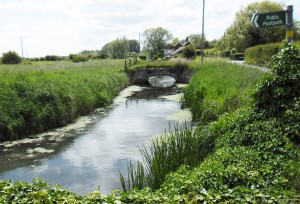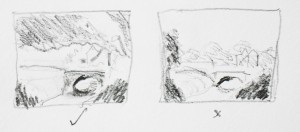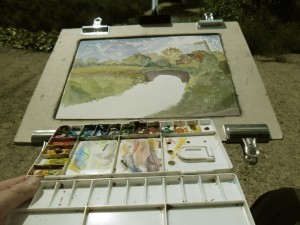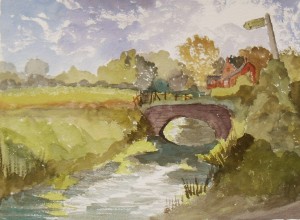
In Pt 1 click here I explained how I go about the planning of a painting and the importance of deciding about the composition and placing of tonal values, ie: where the darkest darks and the lightest lights will be positioned. You wouldn’t believe the number of times I’ve seen someone take out a photo from a magazine place it in front of them and go to work copying it as neatly as possible! Is that art? The result might be exceptional, but it will always be someone else’s composition and someone else’s colour scheme. When I decide to paint a subject I wouldn’t be happy with another person’s photo. I prefer to work from real life, or sketches, and to play around with composition first, to test the possibilities. The photo above shows Marshside and here are my initial tonal sketches.

Even if I’m working on a portrait of someone famous, where I don’t have personal access, I would still try to find say, ten photos of the person, then lay them out and design my own composition using the photos and my own sketches as reference material.
Here is my set up for a plein air watercolour painting of the stream at Marshside in East Kent. The stream is important because it used to separate the Isle of Thanet from the mainland, many years ago.

By squinting I could see that the water was nearly as light as the sky and as the eye naturally seeks out the lightest sections, I chose to darken the sky and some of the nearby water, but leave the lightest patches in the water and through underneath the bridge, to lead the viewers eye underneath the arch. I also thought about removing the signpost. but positioned on the right edge, and pointing inwards it would draw the eye back across to the meadows at the left.
So the eye travels in from the bottom along the stream, under the arch, to the farm buildings, it then meets the signpost and goes left back towards the meadow. I have kept the darkest darks as in the first photo, under the arch, the reflection in the water and the foreground foliage.

From my work in progress photo above, you will see that I don’t always follow the ‘rules of watercolour’ which say you should always paint from ‘light to dark’. I often like to establish the darks first, and add the lighter colours later, it can lead to a more powerful painting. A favourite watercolourist of mine Jake Winkle, also works this way, and very effectively. Here is my finished work, I hope you like it. By clicking on it, you will be taken to see further photos and details. Enjoy!
